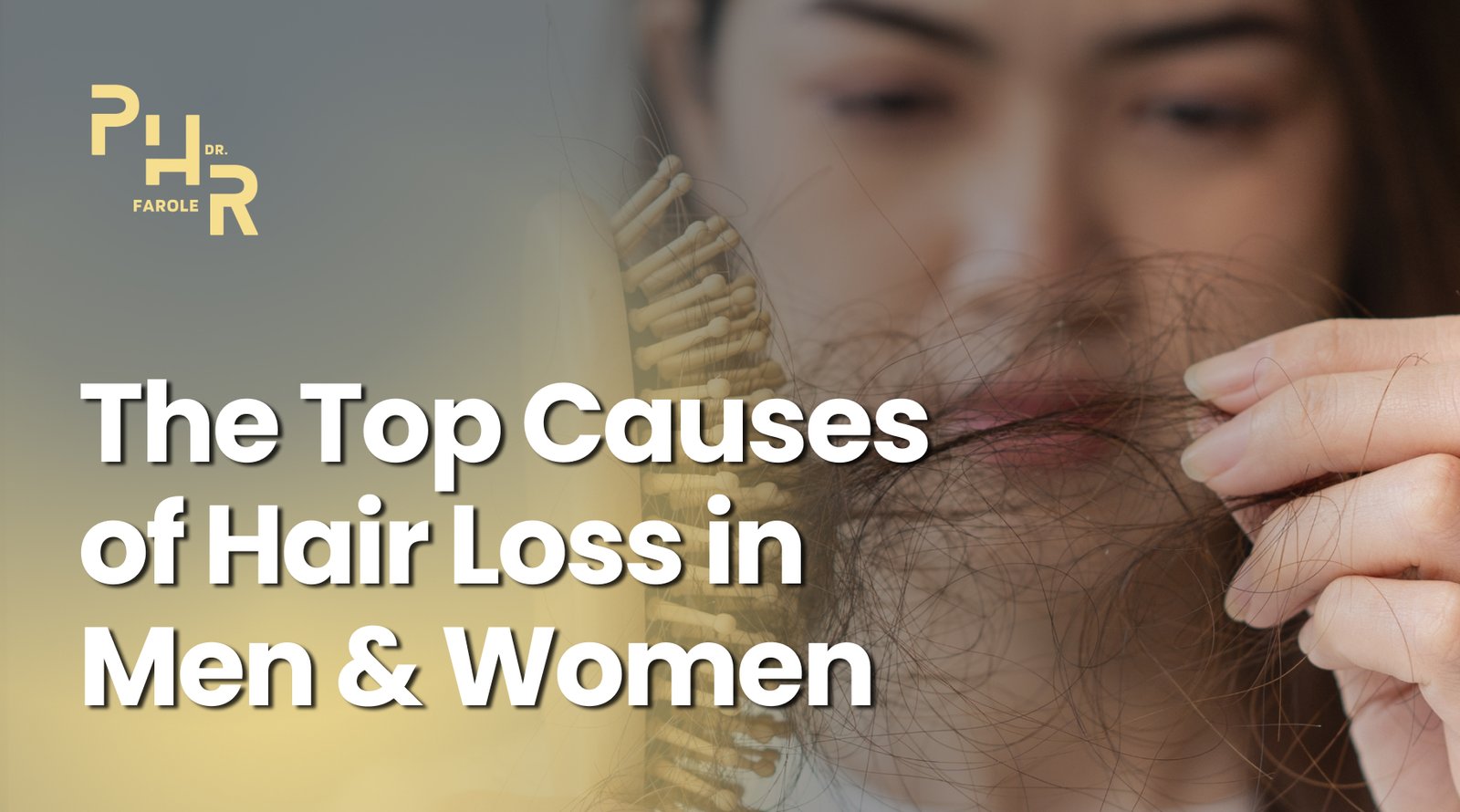Hair transplants offer good, lifetime results for people suffering from hair loss. In this article, we look at the factors that contribute to hair transplant costs, so you are able to plan and understand your quotation.
Do you look at yourself in the mirror and wonder where your lush, thick head of hair disappeared to?
If you do, then you may have toyed with the idea of getting a hair transplant. Like most people, you might have some concerns about the cost.
Factors That Determine the Cost of Hair Transplant.
Hair transplants don’t come at a fixed cost. When doing your research online, you will likely come across some estimates. These only give you ballpark estimates of what you can expect to pay.
However, the amount you pay will be lower or higher than the provided figures, depending on several variables. If cost is one of your concerns, you can also consider alternative treatments that may yield the results you desire while staying in your price range.
Let’s look at what these are.
1. Geographical Location
Hair transplant costs vary by location, that is, different rates for different cities, states, and countries.
Within the country, clinics in megacities or prime locations are costlier than those in smaller towns. One reason for this is overheads. Clinics in big cities pay higher rents, salaries, wages, and other overheads. These costs are reflected in their prices for them to break even.
Similarly, clinics that are popular with celebrities also tend to charge higher rates than smaller, less-known ones.
The costs are different as you move from country to country. Here is a snapshot of what you would pay in other countries.
One way to look at the cost is by the price per graft. Essentially, a surgeon will transplant hair grafts from a donor area to the thin or balding areas of your head.
Here is a look at hair graft prices in different countries.
Poland: $2.82
Italy $2.56
France $2.43
Russia $2.28
Malaysia $2.27
Brazil $2.08
Thailand $2.87
Germany $3.6
U.S $6.8
Canada $8.7
Ireland $3.9
Argentina $1.92
South Africa $1.97
Hungary $1.82
Ukraine $1.75
Turkey $ 1.3
India $1.67
Going by hair loss statistics, the average number of hairs implanted during a transplant is 2,000. As such, most clinics will work on their pricing based on 2,000 grafts. So, to get more accurate costs, multiply the amounts above by 2,000 depending on the country.
Similarly, competition matters. An area with few hair transplant surgeons and a high demand for the service means the surgeons have the upper hand and can charge a premium for their services. Conversely, an area with numerous hair transplantation surgeons can see the competition push the prices down.
2. Clinic and Surgeon’s Reputation
Clinic and surgeon reputations matter in costs as well. Good clinics have top-notch facilities, hire well-qualified, highly trained staff, and are strict on compliance matters. They then charge a premium for what they offer, and their costs will likely be higher than other clinics.
Similarly, all surgeons are not created equal. Some are trained in world-class schools and have decades of experience in performing hair transplants. Such a surgeon will charge higher rates than one fresh out of school with a couple of years of experience.
So which should you opt for?
Granted, a cheaper facility and surgeon can be rather tempting, considering that hair transplants are expensive and everyone wants to save some cash. However, don’t consider costs only.
You want an excellent facility with high levels of hygiene, the latest technology, and highly experienced surgeons. This is advantageous for the following reasons:
- You are almost guaranteed of good, lasting outcomes
- Experienced surgeons understand how to create a perfect, more natural-looking hairline
- Your chances of picking up an infection from the clinic are minimized
- Reputable clinics are likelier to realistically advise on what is achievable and what’s not, while some cheaper clinics will promise results they cannot deliver
- Well-trained, highly qualified surgeons will take you through a thorough pre-transplant assessment to ensure you are fit to undergo the procedure
- You leave the clinic with a comprehensive aftercare routine
3. Extent of Hair Loss
Hair loss is unique to an individual. The causes of hair loss also determine its extent. If the hair loss is severe, you need more grafts, which expand the degree of treatment. This also increases the cost.
If you have a smaller area of baldness, you need fewer grafts, and the cost will be significantly lower.
One metric used to measure the extent of baldness in men is the Norwood Scale. This scale helps surgeons classify hair loss into 7 stages and determine the number of grafts required for a transplant.
Here is a look at the seven stages.
Stage 1
This is the typical male hairline that does not require a transplant. There may be some visible shedding at the temples, and the individual can take care of this with some hair care products.
Stage 2
Here, there is some notable receding of the hairline at the temples, but there is no visible thinning at the top of the head. The hair loss at this stage is often described as a mature hairline; again, a transplant is unnecessary.
Simple hair product applications help resolve the issue.
Stage 3
At this stage, there is a more dramatic change to the hairline, revealing an M-shape at the temples. For some individuals, this hair loss will be prominent at the crown of the head. Someone with this pattern of hair loss is said to be in stage 3 vertex, which is considered to be the onset of balding.
While hair transplants are considered unnecessary in stage 1 and 2, they can be recommended in stage 3. A transplant in stage 3 would require 500 to 2,500 grafts and 3,000 hairs for stage 3 vertex.
PRP also may be a more affordable and applicable treatment at this stage as well. Learn more about the differences between PRP vs hair transplant.
Stage 4
Stage 4 hair loss is a progression of Stage 3 hair loss, with more hair loss on the crown and temple.
However, some individuals will only get hairline recession, while the hair on their crown remains intact. A hair transplant is recommended at this stage, and 3,000 grafts are required.
Stage 5
This stage shows severe hair loss on the crown and temples. There is also noticeable hair loss in the area separating the crown and temples (hairline and top of the head).
For some men, there isn’t too much hair loss on the crown, but the hairline recession is more than what is evidenced in stage 4. A transplant at this stage will require at least 4,000 grafts.
Stage 6
Stage 6 hair loss is termed as extreme balding, and the line separating the balding crown and the receding hairline almost disappears. When there is no balding at the top of the head, the patient’s hairline recedes to the back or near the back of the head.
A transplant is inevitable at this point, and it takes about 5,000 hair grafts to resolve the hair loss.
Stage 7
This is the most advanced stage of hair loss. Here, the patient has a band of hair around the sides and the back of the head. The rest of the head is completely bald.
While there have been a few successful restoration incidences at this stage, baldness at stage 7 baldness is exceptionally challenging to resolve. There are also additional challenges as transplants at this stage require the highest levels of expertise to ensure the remaining hairs are not damaged or over-extracted. Other alternatives would be using hairs from different body parts if present.
As baldness progresses, so does the number of grafts required. And with the cost going up per graft, so does the total cost of the transplant. Also, stage 7 hair transplants might require the donor hair to be recovered from body hair. This needs more expertise, is a more sensitive process, and costs more.
4. Technology Used
To conduct a transplant, hair needs to be harvested from another part of your head or body to be transplanted in the balding areas. There are different techniques for doing this, and they impact the cost of the transplant.
The main ones are Follicular Unit Transplantation (FUT) and Follicular Unit Extraction (FUE). The difference between these two techniques lies in how the donor hair is extracted from the scalp.
With a FUE hair transplant, individual follicular units are harvested from the scalp. A surgeon does this randomly, ensuring no sparse spots are left after the harvesting. For this to happen, circular microscopic incisions are made on the scalp. Follicular Unit Extractions can be done manually by the surgeon or with a robotic handheld device operated by the surgeon.
The other technique is the FUT hair transplant, also known as the strip method. Here, a long, thin piece of tissue is extracted from the back of the head. The surgeon then harvests individual follicles using stereo-microscopic dissection. After harvesting, the wound is closed, leaving one fine linear scar.
FUEs take more time to complete and are a bit more challenging to execute. However, they offer more natural results with no linear scar, are painless, have minimal scarring, and offer quick recovery. As a result, they cost more than FUTs.
5. Additional Costs
Aside from the number of grafts, hair transplants have other costs.
Top among these is the surgeon’s consultation fee. Once you go to a clinic, a surgeon will not stop at a hair loss assessment. Instead, they will also take your history and possibly run some tests before the surgery date.
Different clinics charge different consultation fees depending on their expertise, reputation, and business model. Also, some clinics offer free consultation, but you pay for the blood work and the transplant.
A hair transplant does not end with the transplant, as you need aftercare, including follow-up visits.
Some post-operative and aftercare costs can include:
- Drugs for pain control
- Anti-inflammatories to keep the swelling in check
- An antibiotic to prevent infections
- Suture removal for non-dissolving sutures
- Special hair care products to protect the new hair and scalp
- Accommodation, flights, transfers, and living expenses if you choose to have the procedure done abroad
- Sedation, with full sedation by anesthetist being costlier than local or needleless anesthesia
- Simple transplants with no complications will generally cost less than transplants with extensive postoperative treatments, follow-ups, and aftercare
6. Health Insurance
Health insurers rarely cover cosmetic procedures, which is how hair transplants are categorized.
Still, it shouldn’t hurt to talk to your insurer and find out if they can offset any of your costs, more so if the hair loss results from an illness or treatment of an illness.
Should your insurer shoulder any of your costs, then what you pay out of pocket will be significantly lower than if you settle the transplant bill entirely out of pocket.
7. Donor Graft Availability
Hair transplants involve getting healthy hairs from the back of your head and transplanting them on thin areas. Without enough donor hairs on your head, your surgeon can harvest hair from other body parts. These include the chest and beard.
However, harvesting hairs from these areas is more complicated and more time-consuming than harvesting head hairs. As a result, transplants with hairs from other parts of the body cost more than transplants with head hair.
7. Number of Sessions
Some people get results close to what they want in one session. For others, the desired scalp definition or density is not realized in one session. For the latter, it might take several implant sessions, months apart, to attain the desired result.
Multiple sessions will always cost more because you have more doctor’s visits and must go through the aftercare regimen several times.
Ready for a Fuller Head of Hair?
If you have had enough of baldness or thin hair, a hair transplant can help improve your hair’s density and help you get back your confidence.
As with most things, you likely want to have exact figures to help you plan or save up for the procedure. Unfortunately, the extent of the hair loss, the location, the expertise of the doctor you go to, and aftercare all affect the cost, in either direction. Use the estimates here as just that: estimates. However, you get a more accurate quotation by consulting a hair transplant surgeon at Philadelphia Hair Restoration. We understand that you might be sitting on the fence on this one. How does a no-obligation, free consultation to discuss your concerns and get a quotation sound? If it sounds heaven-sent, claim your free consultation today.



